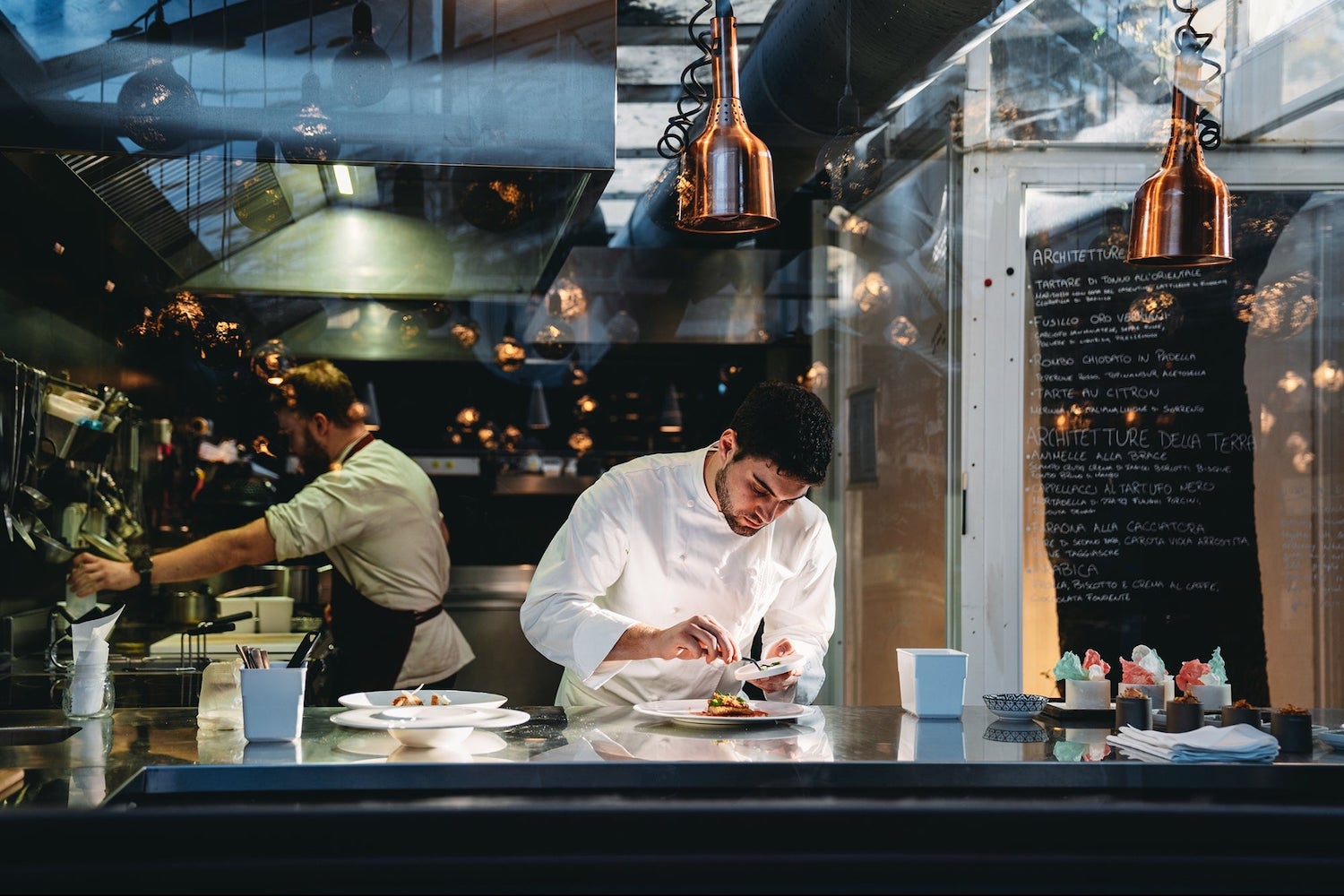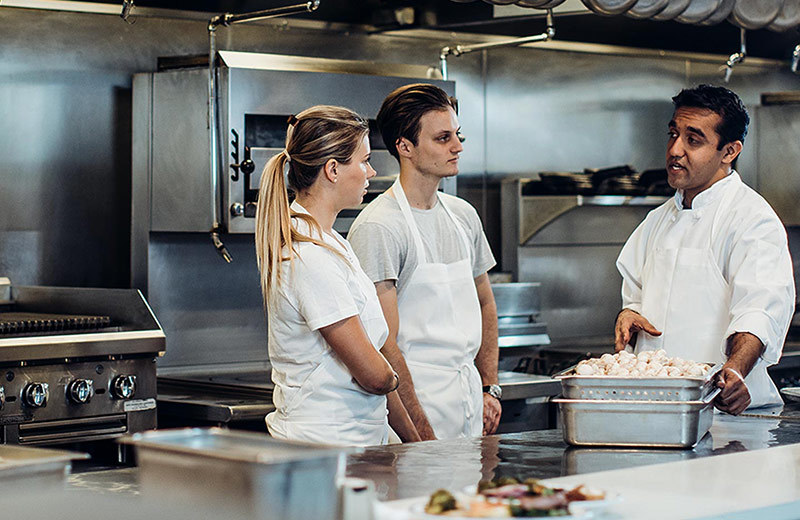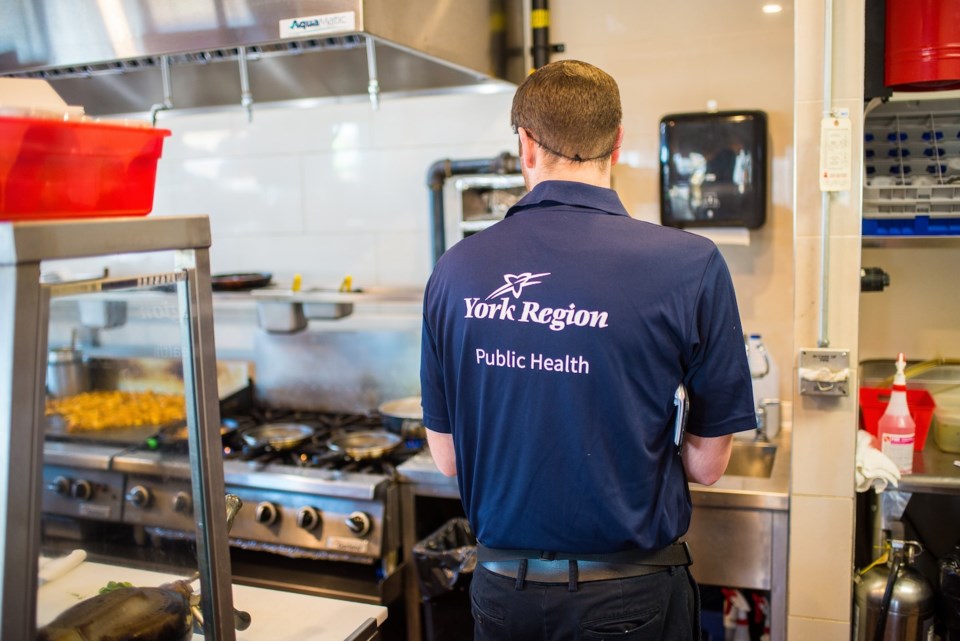
August 30th, 2024
Navigating the restaurant business can be a high-stakes venture, with nearly 60% of new restaurants closing within their first three years, according to the National Restaurant Association. Success in this competitive industry hinges not just on great food, but on a careful balance of smart decisions and avoiding costly mistakes.
From understanding the nuances of customer service to managing overhead costs effectively, there are certain do’s and don’ts that every restaurateur should know to build a thriving establishment. This article will explore the top 10 do’s and don’ts for running a successful restaurant, helping you steer clear of common pitfalls and capitalize on the practices that lead to sustained growth.
In the restaurant business, quality ingredients are the foundation of any great dish and a critical factor in attracting and retaining customers. Studies show that 74% of diners say the quality of food is the most important element in their dining experience, even more than service or ambiance. Using fresh, locally sourced, and high-quality ingredients not only elevates the flavor of your dishes but also enhances your restaurant’s reputation for offering a superior dining experience. This investment in quality often pays off, as restaurants that prioritize exceptional ingredients typically see increased customer loyalty and higher average check sizes.
Cutting corners on food costs by using cheaper or lower-quality ingredients can quickly backfire. While it may offer short-term savings, this approach can damage your restaurant’s brand and lead to negative reviews and decreased customer retention. In fact, nearly 60% of diners are likely to stop visiting a restaurant after a poor-quality meal, and bad experiences spread quickly through word of mouth and online reviews. By compromising on the quality of your ingredients, you risk losing more revenue over time than you save by reducing costs upfront.
Rather than compromising on quality, find strategic ways to manage food costs without affecting the customer experience. Build strong relationships with local suppliers to secure better pricing or buy in bulk for frequently used ingredients. Menu engineering, or adjusting your menu offerings based on ingredient costs and profitability, can also help balance quality with cost-effectiveness. By prioritizing high-quality ingredients while strategically managing expenses, you can create a dining experience that not only delights customers but also supports a healthy bottom line.

A well-trained staff is one of the most valuable assets in the restaurant business, directly influencing customer satisfaction, loyalty, and overall restaurant success. According to a study by Harvard Business Review, companies that invest in employee training see an average of 24% higher profit margins. Thorough training should cover not only the technical aspects of their roles, such as food preparation or serving, but also the soft skills that enhance the customer experience.
Neglecting customer service skills can have detrimental effects on your restaurant’s reputation and revenue. Data from the American Express Global Customer Service Barometer indicates that 78% of consumers have bailed on a transaction or not made an intended purchase due to poor customer service. In the restaurant industry, where diners expect a pleasant and seamless experience, even a single negative interaction can lead to a decline in customer retention. Inconsistent or inadequate training leaves staff ill-equipped to handle complaints, manage busy periods, or provide the level of service that customers expect, leading to dissatisfaction and negative reviews.
To avoid these pitfalls, make customer service training an ongoing priority. Regular workshops, role-playing scenarios, and feedback sessions can help employees develop their skills and feel confident in their roles. Encourage a culture where staff are empowered to solve problems proactively and provide personalized service that makes guests feel valued. By fostering a team that is not only competent but also genuinely invested in providing excellent service, you create a welcoming environment that keeps customers coming back and differentiates your restaurant from the competition.
Creating a memorable ambiance is essential for setting the tone of your restaurant and enhancing the overall dining experience. Research from the National Restaurant Association reveals that 69% of diners consider a restaurant’s atmosphere a significant factor in their decision to return. A well-designed space with thoughtful decor, comfortable seating, and appropriate lighting can make a lasting impression and encourage patrons to choose your restaurant over competitors. The right ambiance not only complements the food but also creates a unique identity that can be a strong draw for new and returning customers.
While crafting a distinctive ambiance is important, neglecting cleanliness can undermine your efforts and damage your restaurant’s reputation. According to a survey, 85% of diners would not return to a restaurant if they found it to be dirty. Cleanliness is a fundamental expectation, and any lapse in maintaining a spotless environment can lead to negative reviews, decreased customer satisfaction, and potential health code violations. Regular cleaning schedules, thorough inspections, and staff training on hygiene practices are essential to ensure that every aspect of your restaurant remains inviting and sanitary.
Balancing a memorable ambiance with impeccable cleanliness requires attention to detail and commitment from all staff members. Invest in quality cleaning supplies, schedule routine deep cleanings, and foster a culture where cleanliness is a shared responsibility. By maintaining a pristine environment while offering an engaging and comfortable atmosphere, you create a dining experience that not only attracts guests but also encourages them to return and recommend your restaurant to others.

Closely monitoring your finances is crucial for the health and sustainability of your restaurant. According to a study by the National Restaurant Association, operators who actively track their financial metrics see a 30% increase in profitability. Regularly reviewing your revenue, expenses, and cash flow helps identify trends, manage budgets effectively, and make informed decisions that can drive profitability. Implementing robust financial tracking systems and using analytics tools can provide insights into operational efficiency and highlight areas where adjustments are needed.
Ignoring small losses can be a costly mistake in the restaurant industry. A report by the Restaurant Business found that small, overlooked losses can accumulate to significant financial shortfalls over time, often contributing to a restaurant’s failure. For example, minor issues such as food waste, unnoticed spoilage, or minor theft can add up, impacting your bottom line more than anticipated. Addressing these issues promptly by implementing better inventory management, controlling portion sizes, and monitoring staff practices can prevent them from escalating into larger problems.
By staying vigilant about your finances and addressing small losses early, you can maintain a healthier financial outlook and avoid potential pitfalls. Regularly reviewing your financial reports, setting up alerts for unusual transactions, and conducting periodic audits can help you stay on top of your financial health. This proactive approach not only safeguards your restaurant’s profitability but also ensures that you are well-prepared to adapt to any economic challenges that may arise.
In today’s digital age, building a strong online presence is essential for attracting and retaining customers. According to a report by Statista, over 80% of consumers research restaurants online before making a dining decision. Having an engaging website, active social media profiles, and positive online reviews can significantly impact your restaurant’s visibility and reputation. An updated and user-friendly website can provide essential information, such as menus, hours, and location, while professional, high-quality content can capture the attention of potential diners and drive traffic to your establishment.
Underestimating the power of social media can be a missed opportunity for connecting with your audience and enhancing your restaurant’s brand. Social media platforms like Instagram and Facebook are powerful tools for showcasing your dishes, promoting special events, and engaging with customers. A survey by Sprout Social found that 70% of consumers are more likely to purchase from a brand they follow on social media. Regularly posting appealing visuals, interacting with followers, and responding to reviews can build a loyal online community and generate buzz about your restaurant.
To maximize the benefits of your online presence, develop a comprehensive digital marketing strategy that includes both your website and social media efforts. Monitor engagement metrics, adjust your content based on audience feedback, and stay updated with the latest trends and platform algorithms. By leveraging the full potential of your online presence and social media, you can effectively boost your restaurant’s visibility, attract new customers, and strengthen your brand’s presence in a competitive market.
Regularly updating your menu is a crucial strategy for keeping your restaurant fresh and appealing to both new and returning customers. According to a study by the National Restaurant Association, 70% of diners are interested in trying new items when they visit a restaurant. By introducing seasonal dishes, limited-time specials, or new recipes, you can keep the dining experience exciting and encourage frequent visits. Menu updates provide an opportunity to align your offerings with current food trends, customer preferences, and ingredient availability, ensuring that your menu remains relevant and engaging.
Overcomplicating your menu can lead to inefficiencies and customer confusion. Research from Menu Engineers suggests that menus with too many options can overwhelm diners, often leading to decision fatigue and a decrease in overall satisfaction. An overly complex menu can also strain kitchen operations, leading to longer wait times and potential inconsistencies in dish quality. Simplifying your menu to focus on a well-curated selection of popular and profitable items helps streamline operations and enhances the overall dining experience.
Balancing menu updates with simplicity requires careful planning and regular evaluation of your offerings. Monitor sales data and customer feedback to identify which items are performing well and which may need revision. Focus on refining your core offerings while introducing new items strategically to maintain interest without overwhelming your guests. By keeping your menu fresh yet manageable, you can attract a diverse clientele while ensuring a smooth and efficient operation.

Understanding your target market is essential for tailoring your restaurant’s offerings and marketing strategies to meet the specific needs and preferences of your ideal customers. According to a report by the Food Marketing Institute, 60% of consumers are more likely to frequent restaurants that cater to their specific tastes and dietary needs. Conducting market research to identify the demographics, preferences, and spending habits of your target audience allows you to create a more focused menu, design a fitting ambiance, and develop effective marketing campaigns that resonate with your ideal customer base.
Trying to appeal to everyone can dilute your brand and lead to a less cohesive dining experience. A survey by Restaurant Business found that restaurants with broad, unfocused menus often struggle to maintain high standards in food quality and service. When a menu attempts to cater to all tastes, it can result in a lack of specialization, leading to inconsistent dishes and a confusing customer experience. This scattershot approach can also make it difficult to effectively market your restaurant, as it lacks a clear identity that stands out in a competitive market.
To effectively understand and target your market, use customer data, feedback, and competitive analysis to refine your concept and offerings. Focus on creating a unique value proposition that aligns with your target demographic’s preferences and needs. By honing in on a specific market segment and delivering a tailored dining experience, you build a strong, loyal customer base and enhance your restaurant’s overall appeal and success.
Investing in marketing and promotions is essential for expanding your restaurant’s reach and attracting new customers. According to a report by the National Restaurant Association, restaurants that actively engage in marketing and promotional activities experience 20% higher revenue growth compared to those that do not. Effective marketing strategies, such as targeted advertising, special promotions, and community events, can increase visibility, drive traffic, and build brand awareness. Investing in both online and offline marketing channels helps ensure that your restaurant stands out in a crowded market and reaches potential customers who might not have otherwise discovered your business.
Relying solely on word of mouth can limit your restaurant’s growth potential and overall visibility. While positive word-of-mouth recommendations are valuable, they often reach only a small segment of potential customers and can be unpredictable. A study by HubSpot revealed that 80% of consumers trust online reviews as much as personal recommendations, highlighting the importance of a strong online presence and proactive marketing efforts. Without a strategic marketing plan, your restaurant may miss out on opportunities to engage with a broader audience and attract new diners.
To maximize the effectiveness of your marketing efforts, develop a comprehensive strategy that includes both digital and traditional tactics. Utilize social media platforms, email marketing, and local partnerships to create engaging content and promotions that resonate with your target audience. Track the performance of your marketing campaigns through metrics and adjust your strategies as needed to optimize results. By actively investing in marketing and promotions, you can enhance your restaurant’s visibility, drive customer engagement, and ultimately achieve long-term success.

Prioritizing health and safety regulations is fundamental to maintaining a safe dining environment and protecting your restaurant’s reputation. According to the Centers for Disease Control and Prevention (CDC), foodborne illnesses affect 48 million people in the U.S. each year, underscoring the critical importance of strict hygiene and safety practices. Adhering to health and safety standards not only helps prevent outbreaks but also fosters trust with customers, who are increasingly concerned about food safety.
Assuming that minimal compliance with health and safety regulations is sufficient can be a dangerous oversight. A report by the Environmental Health Specialists Network reveals that nearly 50% of food establishments have critical violations that could lead to foodborne illnesses if left unaddressed. Small lapses in adherence to health codes can escalate into significant issues, resulting in costly fines, temporary closures, and long-term damage to your restaurant’s reputation. Consistent and thorough compliance is necessary to avoid these risks and ensure a safe environment for both staff and customers.
To ensure comprehensive health and safety compliance, regularly review and update your procedures in line with local regulations and best practices. Conduct routine inspections, engage in regular staff training, and stay informed about any changes in health codes. Implementing a robust safety management system and fostering a culture of vigilance can prevent compliance issues and demonstrate your commitment to maintaining the highest standards of food safety. By prioritizing health and safety, you not only safeguard your patrons and staff but also enhance your restaurant’s reputation and operational success.
Gathering and acting on customer feedback is essential for improving your restaurant’s service and overall dining experience. Research from BrightLocal shows that 88% of consumers read reviews to determine the quality of a business before visiting. Actively seeking feedback through comment cards, online surveys, and social media interactions provides valuable insights into customer preferences and areas for improvement. Addressing feedback promptly can help you make necessary adjustments, enhance customer satisfaction, and build stronger relationships with your patrons.
On the other hand, taking negative reviews personally can undermine your efforts to use feedback constructively. According to surveys, 53% of customers expect a response to their negative review within a week, and timely responses can mitigate the impact of negative feedback. Viewing criticism as an opportunity for growth rather than a personal attack allows you to address issues objectively and make informed improvements. Reacting defensively or ignoring negative reviews can alienate customers and potentially damage your restaurant’s reputation.
To effectively manage feedback, implement a structured approach for reviewing and responding to customer comments. Train your staff to handle feedback professionally and constructively, and develop a system for tracking recurring issues and addressing them systematically. By focusing on actionable insights and maintaining a positive attitude toward criticism, you can turn feedback into a powerful tool for enhancing your restaurant’s performance and creating a more enjoyable dining experience for your guests.
Mastering the restaurant business requires a careful blend of creativity, strategic planning, and continuous learning. By adhering to these 10 do’s and avoiding the common don’ts, restaurant owners can create a solid foundation for long-term success. From investing in quality ingredients and training staff to embracing digital marketing and staying financially vigilant, each step plays a critical role in building a thriving establishment. With the right approach, your restaurant can not only survive but flourish in today’s ever-evolving market.